Quantum Detectives: How Atom Interferometers Uncover Hidden Gravity Secrets
I’m sure anyone who has ever dug a well or tube well on their land has gone through the troublesome process of guessing where the aquifer level might be higher. Hours of digging, only to discover the water table is too low to be useful — it’s frustrating. That’s when people often turn to village wisdom. In some parts of India, the “wise” folks try balancing a coconut above the ground; in others, bulls are made to sniff out where water might lie beneath. Chances are, your own region has its own curious technique for predicting aquifer levels.
But what if I told you there’s a new kind of detective — a quantum detective, if you will — who doesn’t need coconuts, bulls, microscopes, or shovels, yet can still help reveal where hidden aquifers lie?
This detective works in a way that almost feels like science fiction. Instead of tools and drills, it begins with a cloud of atoms chilled to near absolute zero. These atoms are dropped inside a vacuum chamber, and as they fall, beams of laser light split their paths — sending the atomic clouds in different directions. A little later, another set of lasers nudges them back together, forcing the two paths to overlap.
Now here’s where the magic happens: when the two atomic cloud recombine, they don’t just merge — they interfere, like ripples colliding in a pond. The tiny differences in the way gravity pulled on each path leave a unique signature in this interference. Scientists read that signature like a detective reads clues, and from it, they can tell how strong gravity is at that spot on the ground.
This is the principle behind atom interferometers — quantum devices that turn falling atoms into precision sensors. Move one across a field, and you can map gravity shifts: stronger where dense minerals lie, weaker where aquifers or cavities hide. All of it uncovered not by digging — but by listening to the faint whispers of atoms as they fall.
But why do we need cold atoms at the first place?
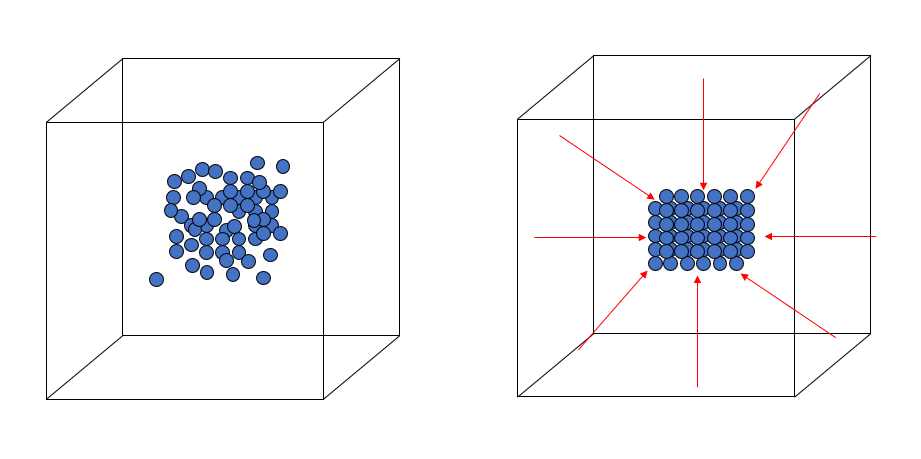
Atoms, like light, can act as both particles and waves. But in everyday conditions, they move far too fast for this wave nature to be seen. The first step in an atom interferometer is therefore to slow them almost to a standstill.
Scientists use atoms like rubidium or caesium and cool them to just a few millionths of a degree above absolute zero. In this frozen state, their motion nearly stops, and their wave character becomes clear. Lasers, fired from all sides, act like tiny brakes — each photon stealing a bit of motion until the atoms are cold enough to reveal their wave-like nature. Only then are they ready to begin their work as gravity’s detectives.
What will we do next with these cold atoms? How does an Atom interferometer actually work?
After cooling and trapping the atoms in a magneto-optical trap, they are released into free fall inside a vacuum chamber to probe the surrounding gravitational field.
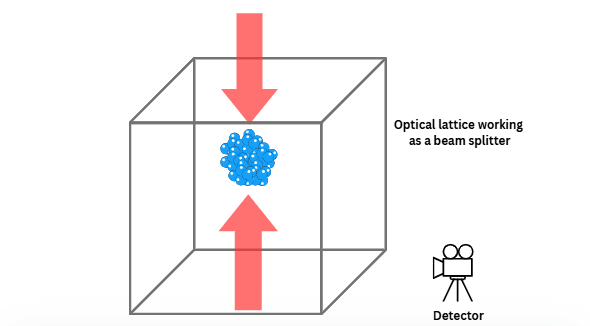
Step 1: As the atoms begin to fall, a combination of laser beams (Optical lattice) splits the cloud into two groups with slightly different momentum states. Here, the standing wave acts like a beam splitter, sending the atoms along two separate paths.
In the image
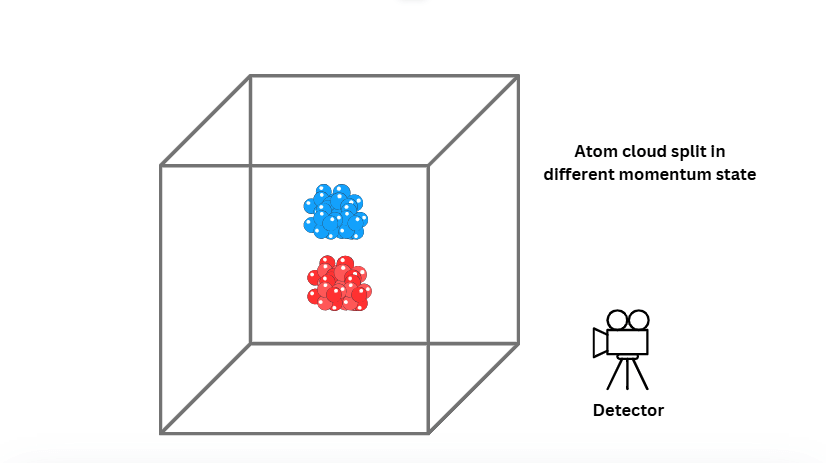
Step 2: The two clouds continue falling side by side, each carrying its own phase as gravity pulls on them.
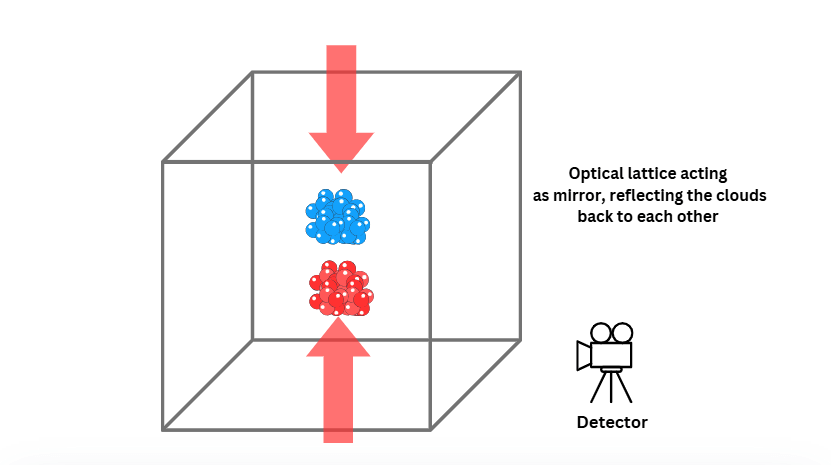
Step 3: Midway through the fall, another standing wave of laser light exchanges the momentum states of the atoms. In this moment, the standing wave acts like a mirror, reflecting the two paths back toward each other.
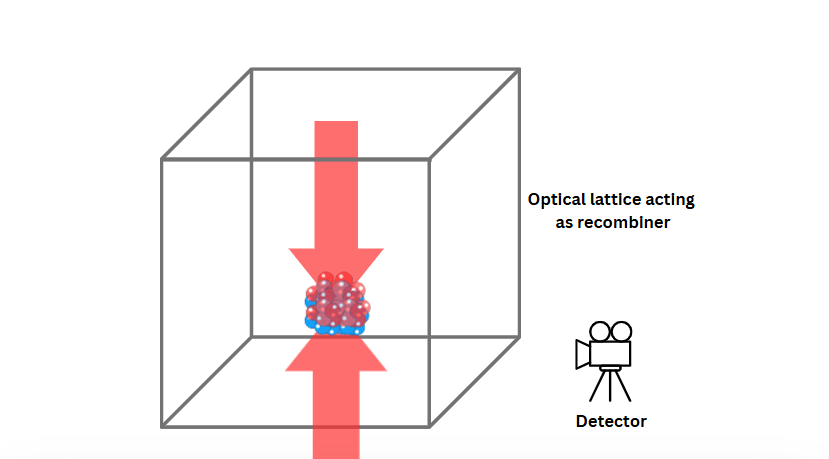
Step 4: Near the bottom, a final standing wave of laser light recombines the two clouds and closing the interferometer.
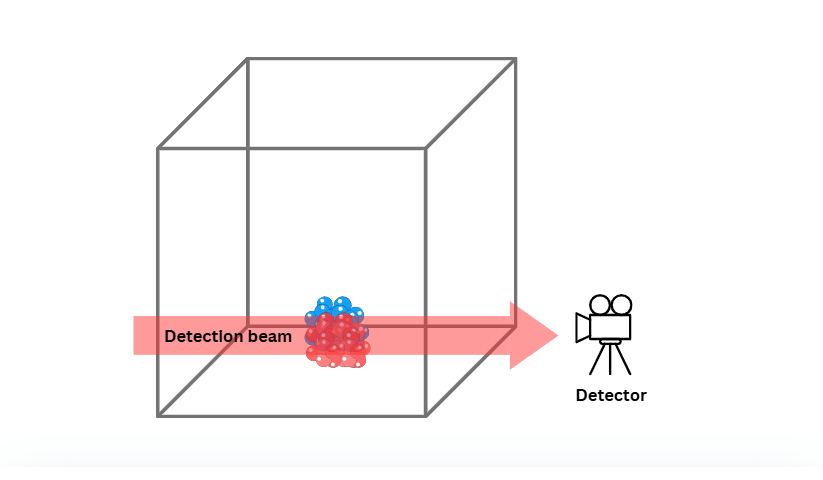
Step 5: At this point, the recombined atoms are measured by a detector, which reads the interference pattern they produce. Hidden in that pattern is the tiny difference in phase accumulated during the fall — a direct signature of the local gravitational pull.
But it seems the two atom clouds are identical travelling almost similar paths. Shouldn't they feel similar gravity?
If you’re having this doubt, you’re actually on the right track. If the two atom clouds were truly identical, falling along exactly the same path, they would experience the same gravity — and no difference would show up. But that’s not what happens inside an atom interferometer.
When the first laser pulse hits, it doesn’t just split the atoms — it also gives one group a tiny momentum kick from absorbing and re-emitting photons. That means:
One cloud is nudged slightly upward before it begins to fall.
The other continues more directly downward.
Because of this, the two clouds follow slightly different trajectories. Gravity is pulling on both, but since they spend different amounts of time at different heights, they accumulate different quantum phases.
When the paths are finally recombined, this difference shows up as a measurable phase shift.
Think of it like dropping two balls at the same time: one falls straight down, while the other is tossed upward first and then falls. Gravity acts on both, but the one that spent extra time higher up experiences gravity’s pull differently over the full journey. That subtle difference is exactly what the interferometer detects.
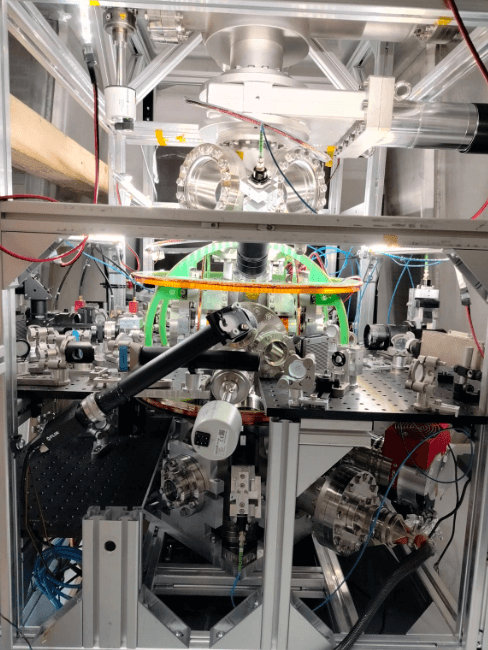
Conclusion: Rise of Quantum detectives of gravity
Atom interferometers are no longer lab curiosities — they’re out in the world, acting like quantum detectives of gravity. In mining, they can spot hidden mineral deposits without drilling a single hole. In the Arctic, they’re tracking the melting of glaciers, watching Earth’s weight shift as ice turns to water.
But that’s just the start. These same devices could guide submarines and spacecraft where GPS fails, navigating by gravity’s pull alone. And in physics labs, they’re probing Einstein’s theories, looking for tiny cracks in our picture of the universe.
From the ground beneath our feet to the edges of space, atom interferometers are teaching us to read gravity’s whispers. They don’t just measure — they reveal. And in doing so, they’re opening a new way of seeing the invisible world all around us.
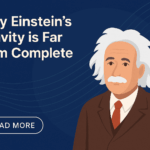


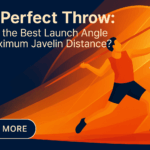
Who wouldnt want to be a quantum detective of gravity? Sleek, mysterious, and apparently good at finding treasure without getting their hands dirty – or even touching the ground, really. Bouncing atoms off laser beams like cosmic billiards to map out hidden riches? Now *that’s* a skill. It’s amazing how slowing atoms down to near absolute zero lets them perform such gravity-defying acrobatics. It’s like giving them superpowers. I love that these tiny quantum acrobats arent just lab toys anymore; theyre out there finding glaciers and maybe even helping submarines avoid running aground (or perhaps just getting a bit disoriented). It’s a whole new way to say, I have a feeling about this place. Pretty cool, if you ask me!